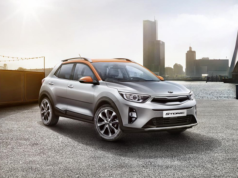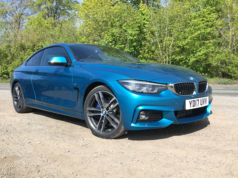The UK crossover market is one that seems to be experiencing never ending growth and popularity as more and more manufacturers enter the segment in a hope to get a share of the spoils that many other car makers have been enjoying for as long as a decade now. Toyota of course want a piece of the pie which has led to the creation of the stylish hybrid crossover, the Toyota C-HR.
The first thing you’ll notice when approaching the C-HR is the styling, a design which is already splitting opinion. Toyota say that the styling is designed to combine a coupé like upper body with the strong underpinnings of a SUV, hence the noticeably prominent wheel arches. The car features a ‘diamond- shape architectural theme’ and as previously said, is undoubtedly splitting opinion, so we’ll leave you to decide whether you like how it looks.
The same variance in opinion of styling is shared with the interior as well as the exterior. It is what can be best described as a typically Japanese design approach, with the coloured strip running across its fascia and purple or brown diamond patterns on the inside of the doors. Once again, it may not be a design to everyone’s taste, but it is a reasonably ergonomic layout despite a lot of buttons adorning the steering wheel and elsewhere. Having said that, even the entry level Icon trim is packed with equipment and safety features as the Toyota C-HR is supposedly aimed at a fashion conscious demographic. The Icon trim level, which starts at £20,995 (or £229 a month on PCP with deposit around 25%), gets 17-inch alloy wheels and Toyota’s ‘safety sense’ which includes features such as automatic city braking, hill-start assist control and a tyre pressure warning system, amongst others. Icon also comes with Toyota Touch 2, including an 8-inch touchscreen, six-speaker audio system with DAB, bluetooth, rear-view camera, as well as Aux and USB inputs as standard.
The middle Excel trim level adds 18-inch alloy wheels, part-leather upholstery, heated front seats and more, starting at £23,995. The top of the range Dynamic specification starts at £25,495 and features a contrasting black roof, LED lights and Toyota Touch 2 with Go.
In terms of practicality, a big selling point for this type of car, it seems that Toyota may have prioritised design over interior space – it’s not bad, but there are certainly more spacious options on the market. Headroom isn’t a particular issue in either the front or rear, but passengers in the back may have complaints concerning the compromised legroom, particularly on longer journeys. The coupé styling means a boot capacity of 377 litres, which is an adequate amount, but not up to par with key competitors such as the Qashqai.
The two engine choices for the Toyota C-HR consists of a 1.2-litre turbocharged petrol engine and a hybrid drivetrain – a four-cylinder 1.8-litre petrol engine with an electric motor, paired with a CVT automatic gearbox. Since Toyota predict 75% of C-HR sales will be the more costly hybrid model, that’s where we’ll start. Around town, the hybrid is perfectly quiet and civilised, much what you would expect from any other modern hybrid as it alternates between petrol and electric modes depending on the situation. When you’re given some more room to put your foot down, however, things become somewhat less sophisticated as the engine really sounds like it is working overtime to keep you moving along. The blame can be pointed towards the CVT automatic which does have a bad reputation in general. Toyota stated they are sticking with the transmission however because of its greater durability and efficiency over conventional automatics. Despite the intrusive nature, the hybrid option might be the smart choice on paper – figures such as 86g/km of CO2 emissions and the 74.3mpg fuel economy do still make it a tempting option. As for the 1.2-litre engine, recently launched in the Auris, the turbocharged option produces 116bhp and can be paired to a six-speed manual transmission. Said gearbox is a new Intelligent Manual Transmission, new in the C-HR, blipping the throttle on down changes and rev-matching on the way up for a smoother ride. The petrol is the more fun option, but is still down on power and the 136lb ft of torque fails to deliver the get-up-and-go you would want when it’s needed.
The unsatisfactory engine line-up is a huge shame, as the C-HR is a very capable car in most other aspects. It is one of the best handling cars in it’s class thanks to a low centre of gravity and minimal body roll. Steering is well weighted but there is a lack of feedback, commonplace in modern cars of this stature, but the car is well composed when driven with a bit of enthusiasm.
Toyota say that this car is aimed at a ‘cooler, younger’ demographic, so the car’s shortcomings such as practicality may not be a problem for you, and if they’re not then the Toyota C-HR could be a viable option. It is a shame about the engine choices though, the C-HR would really benefit from something like a 1.6-litre diesel option with a good chunk of torque to fill in where the hybrid and petrol can’t, but eco-friendly Toyota won’t offer one. It seems that the Toyota C-HR then may be reserved for those who want to stand out from the crowd, which isn’t necessarily a bad thing.










